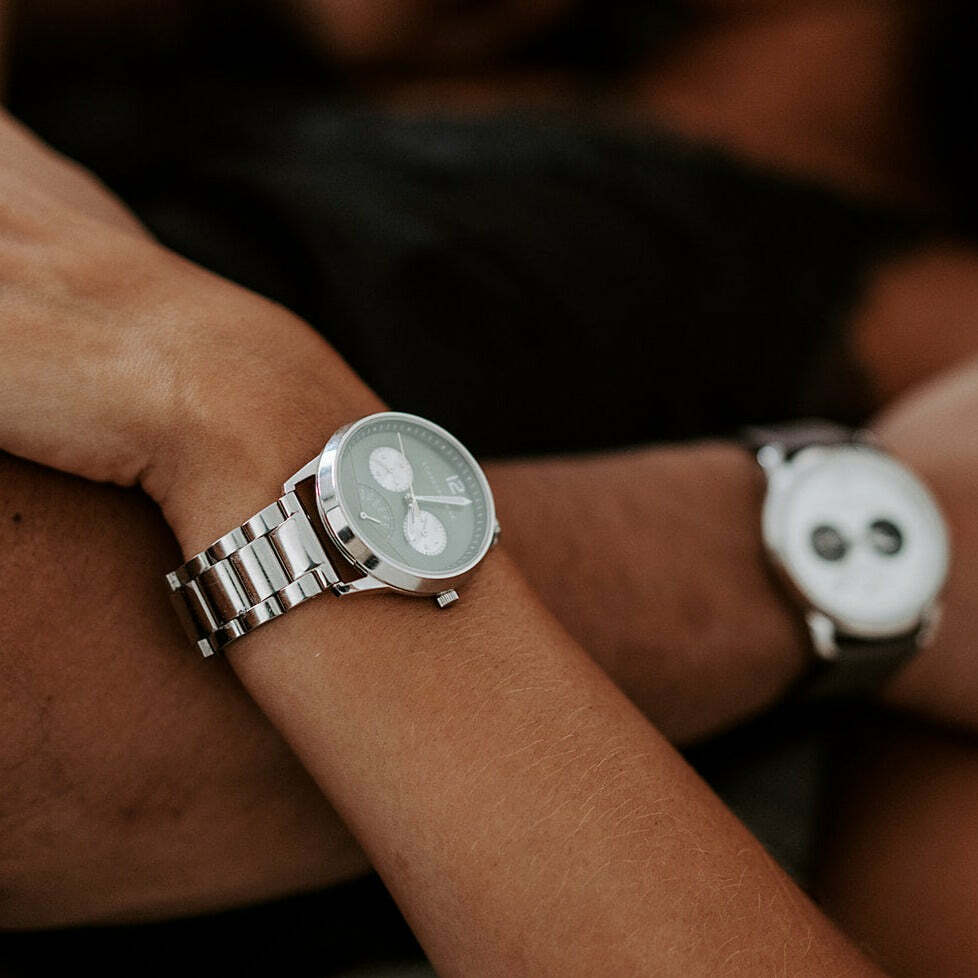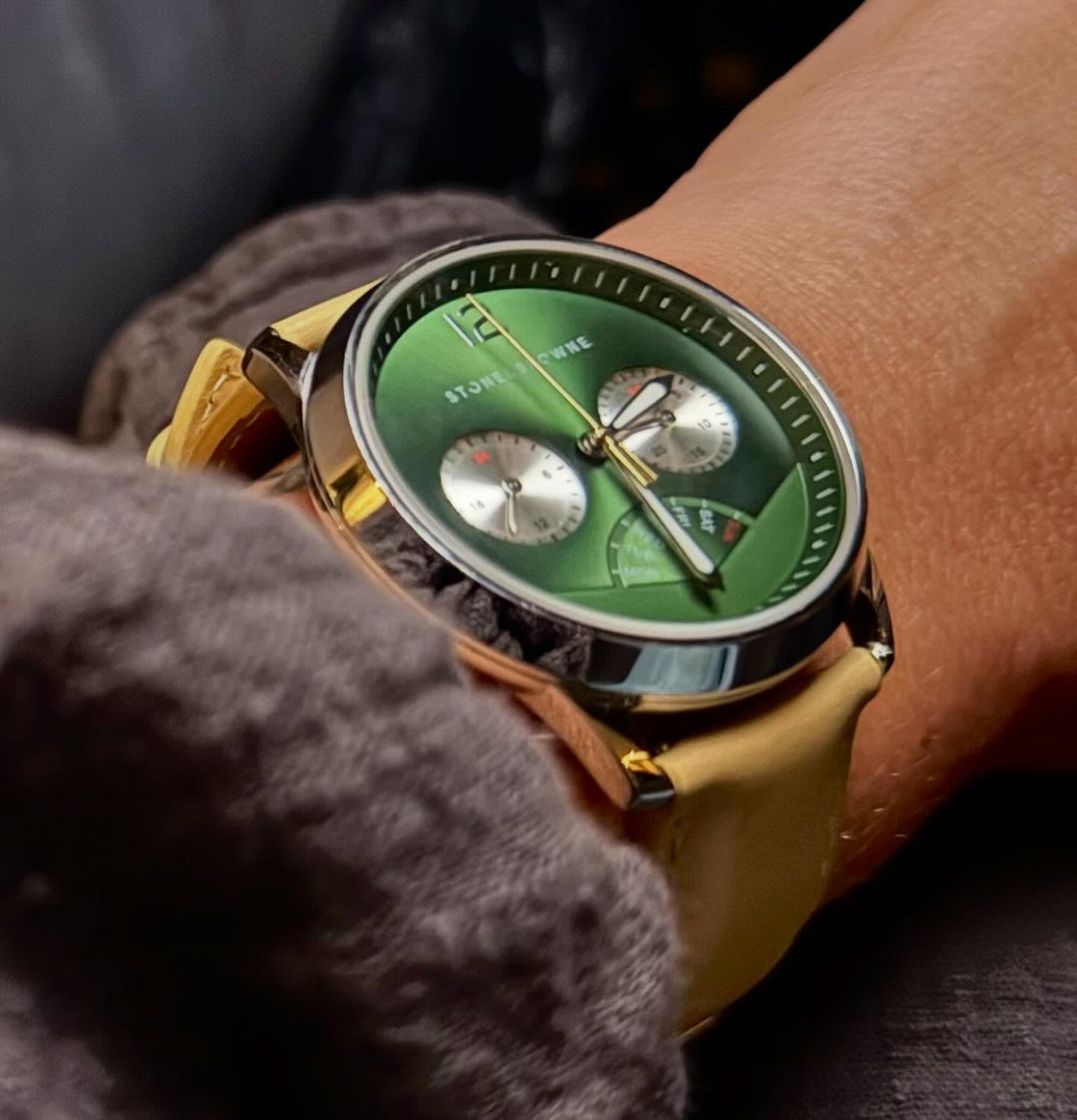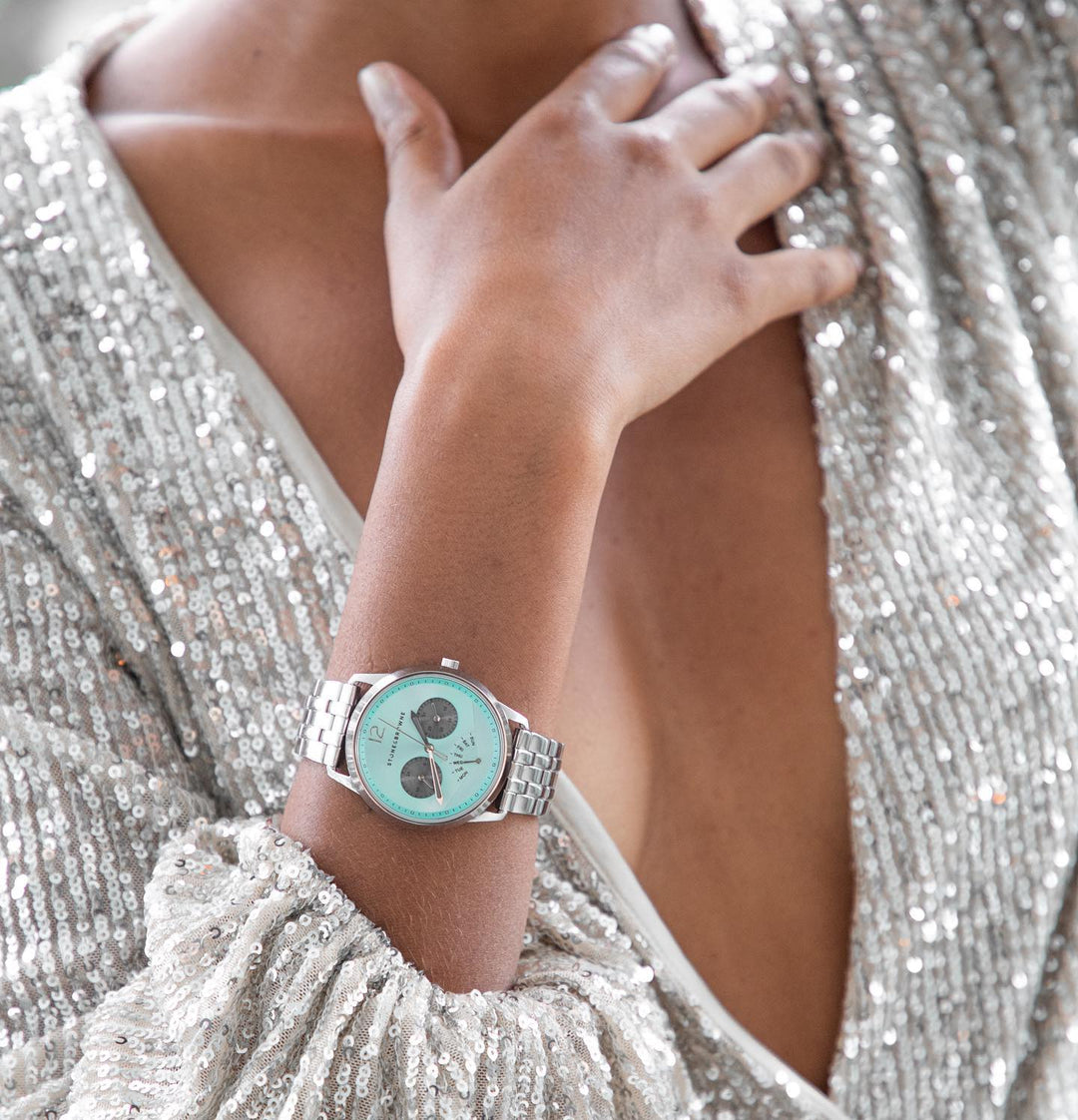At a glance
- Early watches were luxurious accessories, then transitioned to pocket watches for men in the 18th and 19th centuries.
- The 20th century saw the rise of wristwatches, with iconic designs like the Rolex Submariner and Omega Speedmaster emerging.
- Today's watches combine classic styles with modern tech. Smartwatches offer functionality, while hybrid watches bridge the gap between traditional and digital.
Watches have long been more than mere instruments for telling time; they symbolise style, status, and personal expression. Over the centuries, watch design has evolved significantly, reflecting changes in technology, fashion, and cultural values. From the classic elegance of early timepieces to the sleek sophistication of contemporary designs, the journey of watchmaking is a fascinating narrative of innovation and artistry. Stone & Browne, a distinguished watch brand offering a diverse range of men's watches in Australia and an extensive collection for those looking to buy women's watches online, epitomises this evolution.
The Dawn of Timekeeping: Early Mechanical Watches
The earliest watches, dating back to the 16th century, were mechanical masterpieces crafted by skilled artisans. These timepieces, often worn as pendants or attached to clothing, were the first portable clocks, making personal timekeeping a reality. Peter Henlein, a Nuremberg locksmith, is usually credited with creating some of the earliest portable timepieces around 1505. These early watches were intricate mechanisms encased in precious metals and adorned with elaborate engravings.
These watches were a luxury only the wealthy could afford. They symbolised status and were often given as gifts to royalty and nobility. The focus was as much on the exterior design as on the watch's functionality, with cases made of gold and silver and embellished with jewels and enamel.
The Age of Precision: Advancements in the 18th and 19th Centuries
The 18th century brought significant advancements in watchmaking, with the introduction of the balance spring by Robert Hooke and Christiaan Huygens around 1657. This innovation greatly improved accuracy, making watches more reliable. The era also saw the rise of pocket watches as the primary form of personal timekeeping. These were typically carried in waistcoat pockets and attached by a chain.
Designs during this period ranged from the simple and utilitarian to the highly decorative. Dials were often white enamel with black Roman numerals, and cases continued to be crafted from precious metals. Using glass to protect the dial became standard, enhancing functionality and durability.
In the 19th century, the Industrial Revolution brought mass production to watchmaking, making timepieces more accessible to the general public. Brands like Waltham and Elgin in the United States began producing watches on a large scale, combining precision engineering with affordability. This period also saw the development of keyless winding mechanisms, further enhancing convenience and usability.
The Wristwatch Revolution: Early 20th Century
The advent of the wristwatch in the early 20th century marked a pivotal moment in watch design. Initially considered a novelty for women, wristwatches gained popularity among men during World War I due to their practicality on the battlefield. Soldiers found it more convenient to glance at their wrists rather than fumbling for a pocket watch, leading to a surge in demand for wristwatches.
Post-war, wristwatches became a staple of men’s fashion, with brands like Rolex and Omega leading the charge. Designs evolved to be more rugged and functional, suitable for everyday wear. The Art Deco movement of the 1920s and 1930s influenced watch design significantly, introducing geometric shapes, bold colours, and new materials like stainless steel.
Mid-Century Modernism: 1940s to 1960s
The mid-20th century was a golden age for watch design, characterised by elegance and innovation. During the 1940s and 1950s, watches became slimmer and more streamlined, reflecting the minimalist aesthetics of the era. The introduction of automatic (self-winding) movements revolutionised convenience, eliminating the need for daily winding.
The post-war period also saw the rise of iconic designs that remain popular today. The Rolex Submariner, introduced in 1953, set the standard for dive watches with its robust build and water resistance. The Omega Speedmaster, first released in 1957, became the first watch worn on the moon, symbolising human achievement and technological advancement.
The Quartz Crisis: 1970s and 1980s
The 1970s brought about the Quartz Crisis, a transformative period in the watch industry. Seiko's invention of the quartz movement in 1969 introduced a new level of accuracy and affordability. Quartz watches, powered by batteries, were cheaper to produce and maintained time more accurately than their mechanical counterparts.
This technological shift posed a significant challenge to traditional Swiss watchmakers, who struggled to compete with the influx of inexpensive quartz watches from Asia. However, it also spurred innovation and diversification in design. The era saw the emergence of digital watches, with brands like Casio and Timex introducing models with LED and LCD displays, offering features like alarms, calculators, and even rudimentary games.
The Renaissance of Mechanical Watches: 1990s to Present
The 1990s marked a renaissance for mechanical watches, driven by a renewed appreciation for craftsmanship and tradition. Collectors and enthusiasts began to value mechanical timepieces' intricate engineering and historical significance. Swiss watchmakers, in particular, experienced a resurgence, with brands like Patek Philippe, Audemars Piguet, and Jaeger-LeCoultre leading the way.
Contemporary watch design is characterised by a fusion of classic and modern elements. Advances in materials, such as ceramic, titanium, and carbon fibre, have expanded the possibilities for watchmakers, allowing for lighter, more durable, and more innovative designs. Technology integration has also become a defining feature, with the advent of smartwatches offering a blend of traditional aesthetics and modern functionality.
The Modern Landscape: Contemporary Trends and Innovations
Today, the watch industry is more diverse and dynamic than ever. Contemporary designs often balance tradition and innovation, focusing on versatility and personalisation. Brands like Stone & Browne cater to a wide range of tastes and preferences, offering men's watches in Australia that blend timeless elegance with modern sophistication and providing options to buy women's watches online that are stylish and functional.
One notable trend in modern watch design is the emphasis on sustainability. Many watchmakers are adopting eco-friendly practices, using recycled materials, and reducing their environmental footprint. This shift reflects a broader trend towards responsible luxury, where consumers seek products that align with their values.
Another trend is the rise of customisation and limited editions. Consumers today value uniqueness and individuality, and watch brands are responding by offering personalised options and exclusive releases. This approach enhances the watch's appeal and fosters a deeper connection between the brand and its customers.
The Influence of Technology: Smartwatches and Beyond
The integration of technology into watch design has opened up new frontiers. Smartwatches, pioneered by tech giants like Apple and Samsung, have redefined what a watch can do. These devices offer many features, from fitness tracking and health monitoring to notifications and connectivity with other smart devices. The challenge for traditional watchmakers has been incorporating these technological advancements while maintaining classic timepieces' aesthetic and emotional appeal.
One solution is hybrid watches, which combine traditional mechanical movements with smart functionalities. These watches retain the look and feel of a classic watch but offer features like activity tracking, notifications, and even solar charging. This hybrid approach appeals to consumers who appreciate traditional watches' craftsmanship but also want the benefits of modern technology.
The Future of Watch Design
Watch design is poised to evolve in exciting and unpredictable ways as we look to the future. Advances in materials science, nanotechnology, and artificial intelligence could lead to even more durable, functional, and personal watches. The growing interest in space exploration and deep-sea diving may inspire new designs that push the boundaries of what watches can achieve in extreme environments.
At the same time, the enduring appeal of classic watch design suggests that the fundamentals of watchmaking – craftsmanship, precision, and artistry – will always remain central. Brands like Stone & Browne, which honour tradition while embracing innovation, are well-positioned to thrive in this dynamic landscape.
The evolution of watch design is a testament to human ingenuity and the enduring desire for beauty and functionality. From the intricate mechanical watches of the Renaissance to the sleek smartwatches of today, each era has contributed to the rich tapestry of horological history. As we move forward, the balance between tradition and innovation will continue to shape the future of watch design, ensuring that timepieces remain not just tools for telling time but expressions of individuality and style.
Stone & Browne offers diverse options for those seeking to explore this fascinating world. Whether you are looking for men's watches in Australia or want to buy women's watches online, Stone & Browne provides timepieces that reflect the perfect blend of classic elegance and contemporary sophistication.






